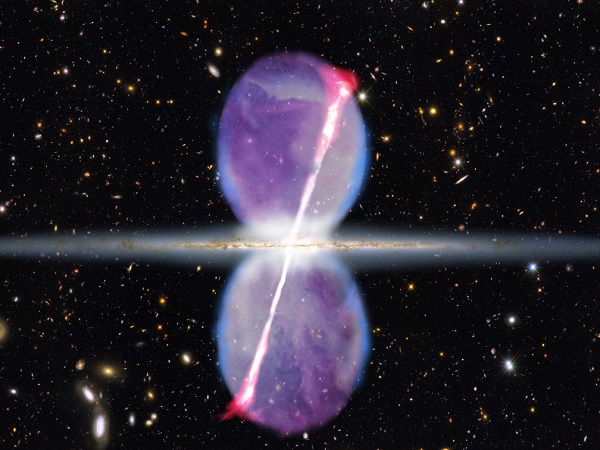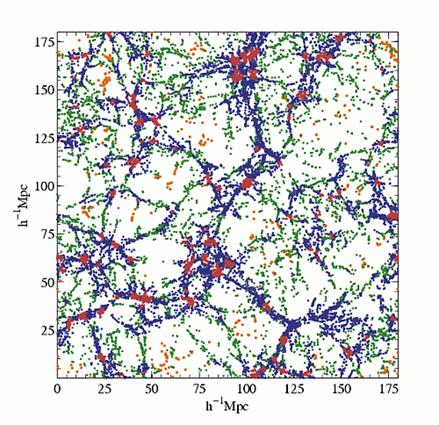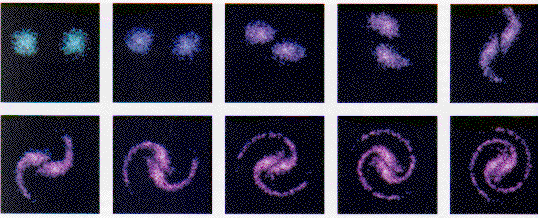Quasar axes aligned along filaments
On November 20, 2014, the Daily Mail published an article in which they said that it was 'spooky' that the centers of galaxies were aligned. Observations with the Very Large Telescope in Chile have shown that the axes of quasars are aligned along the cosmological filaments in which they are embedded. Quasars are the hyper-luminous centers of galaxies and possess massive polar jets extending from their spin axes. The distant quasars are so brilliant that that they outshine all the stars in their host galaxy as shown in this photograph from NASA.
http://www.nasa.gov/images/content/699444main_QSO.jpg The quasar brilliance tapers off as we come forward in time, and hence closer to our own location in space. Indeed, the center of our Milky Way galaxy has the remnant of our original quasar and the remains of its polar jets can also be traced. This central object in our galaxy is still emitting X-rays and gamma rays. The data suggest a picture like this for our galaxy and its center:
This comes as additional confirmation of something that had already been noted with galaxies closer to us in space. In 2010, the Sloan Digital Sky Survey found that the spin axes of these closer galaxies (and hence the remains of the object in their centers) were also found to be aligned along the filaments in which they are embedded as illustrated schematically here:
http://www.fromquarkstoquasars.com/wp-content/uploads/2014/11/Quasar-Alignment-Featured-Image.jpg As a result of these developments, astronomers will have to re-assess their Standard Model. It is in this context that the present study is of great interest. The large-scale structure of the universe is proven to be made up of filaments and voids. A plot of galaxy position reveals that they form a filamentary, web-like structure with voids between the filaments as shown here.
In the lab, experiments can be done with plasma filaments, and, because plasma scales linearly, the results of these experiments can be up-scaled in size to structures we see in the cosmos. When two or more parallel plasma filaments intertwine in the lab, miniature spiral galaxies are formed. In fact, all the known types of galaxies can be reproduced in miniature in a sequence. The following URL gives an illustration of the interaction of two filaments in the lab that did this. We are looking down the long axis of the filaments.
In a close pair of parallel filaments in the lab, and also in space, there can be any number of interactions along the common filament axis, each one producing a galaxy. Each galaxy will be spinning like a bead on the string of the interacting filaments. So the galaxies spin axes, and that of the quasar in each of their centers, will be parallel to the filament axis. It therefore comes as no surprise to plasma astronomers that this is exactly what is seen in the depths of space; it fits perfectly with the lab experiments and so is completely predictable. However, this feature of the universe leaves gravitational astronomers scratching their heads. As Professor Sluse noted above, there is indeed an ingredient missing from the Standard Model based on gravitation. It may yet be that only the Plasma Model can supply an easy solution to the gravitational astronomer’s dilemma. Barry Setterfield, 28th November, 2014.
|





